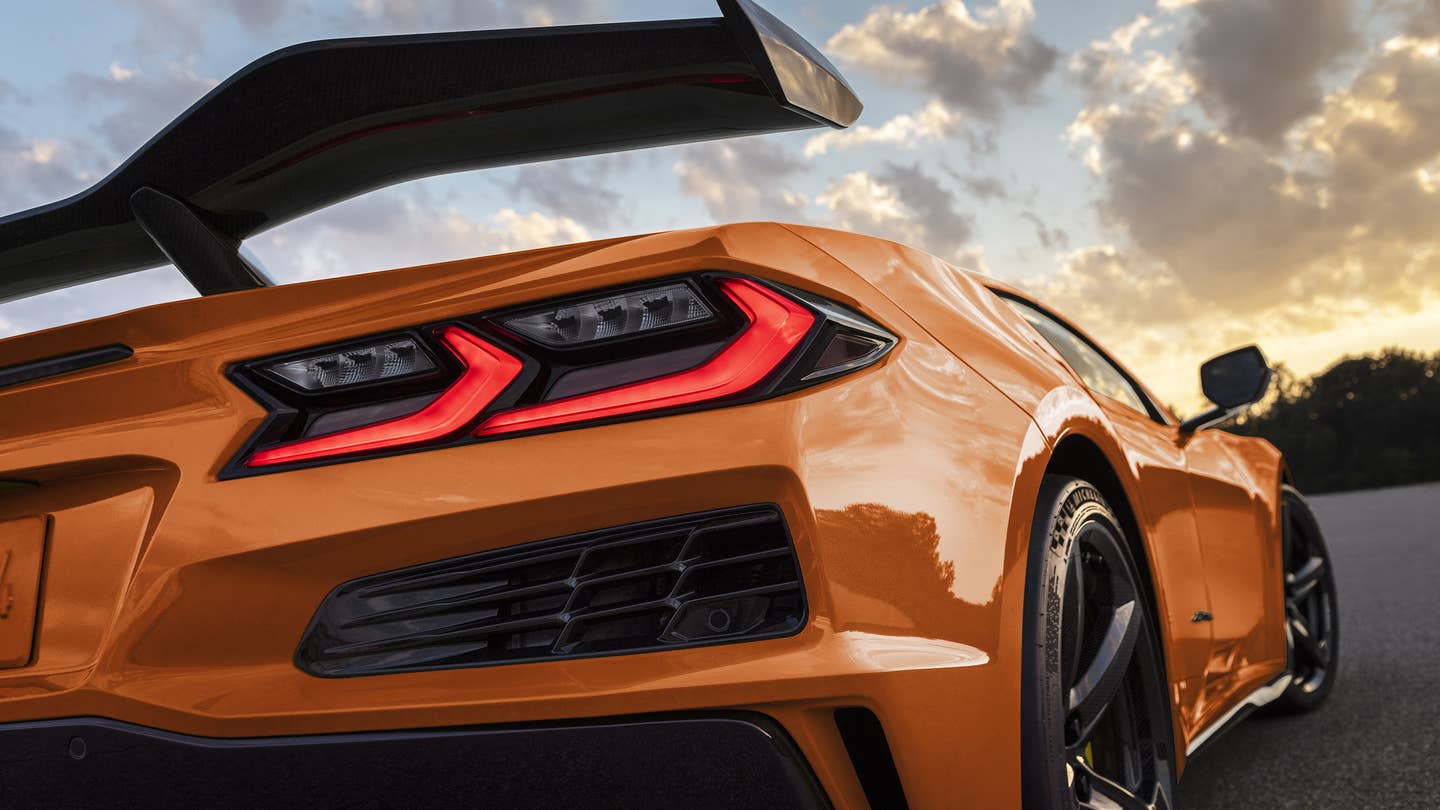A recent GM patent teases tech as seen on the world’s most sophisticated hypercars.

Chevrolet clearly has ambitious plans for the C8 Corvette, between the mild-hybrid E-Ray, inevitable ZR-1, and long-rumored Zora. A General Motors patent dated January 9, 2024, may tip us off to active aero technology we could eventually see in the zenith of the sports car.
The document describes a front and rear wing whose angles of attack constantly respond to vehicle dynamics and current conditions. The movable aero is controlled by an ECU, which is fed data like longitudinal and lateral acceleration, as well as yaw. Information from an electronic limited-slip differential (eLSD), like relative wheel speeds, could also inform how the aero is deployed.
Say the ECU reads that the car is understeering from its wealth of sensors; in that scenario, the rear wing would be “deactivated,” as the patent reads, to provide the driver with a little more necessary rotation. Or, in a situation where the eLSD is directing torque to a specific wheel, the front or rear aero devices may adjust to ensure that torque is applied as effectively as possible. Now, imagine these changes being made instantly or, in some cases, predictively based on what the ECU anticipates the driver’s next input will be, or what they’re trying to do.
General Motors
Active aero is nothing new, of course, and our peers at CarBuzz, which unearthed this patent last week, compare GM’s proposed system to technology Pagani introduced on its Huayra supercar more than a decade ago. Pagani utilized a pair of split flaps on the Huayra’s nose and rear deck to achieve its desired effect, whereas a future Corvette may only attempt to move a single wing on each end of the car.
As with any patent, there’s absolutely no certainty that GM will bring such features to market, or is even planning to. Companies like to put their stamp on ideas like these, and sometimes abandon them entirely like Ford did with its self-repossession tech. In that example, we’re all better for it. The ‘Vette getting active aero, however, seems totally in line with development of GM’s flagship and well-suited for the technological showcase that the Zora has been rumored as for six years now. In any case, it’s encouraging to see that even after finally going midengine, there are still surprises in store and new frontiers to tread for America’s supercar.
Got tips? Send ’em to tips@thedrive.com


